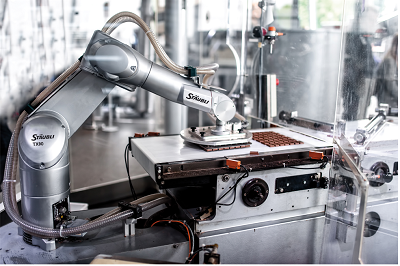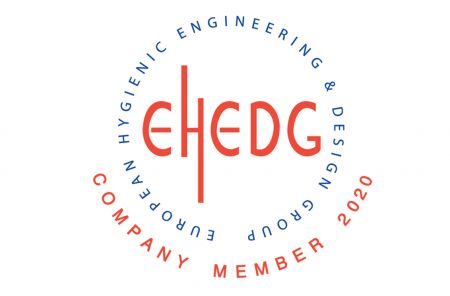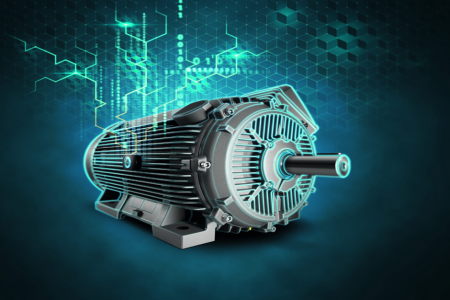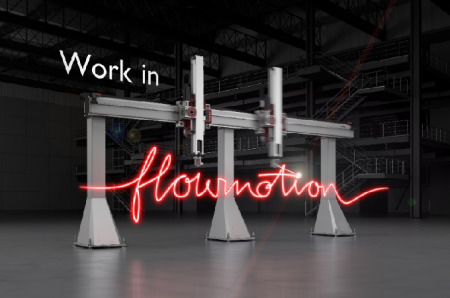
*Article Courtesy of New Zealand Engineering News*
From increased productivity to safer work environments, robotics and automation is set to play an important role in New Zealand’s future. But what needs to be considered in this journey? NZEN spoke with industry experts to find out.
According to Richard Cave, national sales manager of robotics and discrete automation at ABB Limited, “the big global events of the last 18 months have really shown the benefits that can be gained from automating, in particular, installing robotics”. And this is something that other industry experts agree on. “These days the conversation has shifted, quite significant since COVID,” says Euan Brouwers, general manager at CNC Design Ltd. “People are telling me it is increasingly difficult to get staff at all. So they’re trying to free up staff to work on higher-value tasks, instead of just doing basic assembly or anything like that. “Because of this tightness in the labour market, employers seem to be thinking more about what their staff want to do and looking to robots for
the really boring tasks that staff don’t like being assigned to which might drive them to leave.
Friends, not foes
But one thing that’s important to communicate is that robots aren’t to replace people, they are there to assist. “There’s always this fuss about people losing their jobs,” says Cave, who believes that this will not happen. “I can hand-on-heart say that I do not know of any employees who have lost their jobs to a robot.” Instead, Cave says that automation will increase the number of jobs. “There’s plenty of evidence that it’s done this in the past,” he says. “Robots need operators, robots need people to programme them, and so the vast majority of all the robot installations I’ve seen, at the companies they have retained and reskilled people, and upskilled people to be able to programme, do additional programming on the robots, do maintenance, to supervise its operation.” To help reduce this ‘fear of robots the message is clear: ensure that the people who will be working with the robots are involved in the process from start to finish. “Think about the people who will be involved, and codesign the systems that you want to create with the human workers who are going to be working with the automation,” says Cave. This is to make sure that any new automation coming onto the workshop floor will fit in with the workflow of the company and the people who are doing the work. Through research, the University of Auckland’s Professor Bruce MacDonald has seen people transition from this fear of robots to trusting them instead. “We found that older people who have worked on some of our studies have become more open to the idea that robots could help them,” says MacDonald. “The problem being that if you look, there’s all doom and gloom about robots, these ‘killer robots’ and stuff like that, so people get a bit scared about what might happen. “But when they see actual robots doing things, then they get a better idea of what might be possible.”
The training to match
Brouwers agrees that getting the team onboard is essential. And that one of the ways to do this is to involve them in the training. “We provide in-house training courses,” he says. “On purchasing their first robot, one of our engineers will go over once it’s been powered up and spend a day or two or three with them. “We find that really effective to get them going in the right direction.” Autoline also finds success with this approach says Matthew Fisher, managing director. “A big part of our work and offering is training operators, and that’s an area we are putting a lot of focus on within the company to really train tomorrow’s operators.” “If you haven’t got the people behind it that has the knowledge of the system, that can derail to a point.” And as ABB’s Cave says, “because you don’t have to have a degree in engineering to be able to programme a robot, sometimes the best robot programming is done by the people who have worked on the factory floor for 20 years because those people know the factory better than the owners”.
A helping hand
At Autoline, recent excitement has been around its new cobot welder. “The collaborative robot space is quite new and there’s a lot of hype about it,” says Fisher. “One of the brands we do is the Doosan range. It’s just released a 20kg and 23kg payload collaborative robot, which is a gamechanger for that entire industry.” Fisher says that to create this cobot, Autoline has taken this part of machinery and created a cobot welder from it. “It opens up the applications for collaborative welding and jobbing type work – it’s an area that typically you wouldn’t have found welding robotics feasible.” Inbuilt torque sensors in Autoline’s welding cobot mean that it is able to work around collaborators in a safe manner.
Safety is paramount
With the safety of utmost importance in any work environment, robotics and automation are playing their part to keep their human collaborators away from danger. “A lot of robotics now are being used in areas where there is either physical danger or potential physical harm to people, whether it be repetitive strain injuries, lifting injuries,” says Cave. “All those different hazards can be mitigated by automating, in particular with robots.” At CNC Design, Stäubli robots also take hygiene into consideration. Brouwers explains that they all come in a hygienically designed ‘HE’ version. “They are the only robot manufacturer that designs to EHEDG (European Hygienic Engineering Design Group) guidelines.” When it comes to the safety of collaborative robots, Stäubli robots also meet high standards. “Most collaborative robots are slow and low powered, and that’s how they claim they are safe – because they claim that they don’t have enough power to do much damage,” says Brouwers. “Whereas Stäubli’s technique is to have advanced safety features, dynamic safety features around the whole robot, all to the ISO13849-1 PLe performance level. “So that’s something quite innovative.” The HE version also can work in wet environments and has the ability to be washed down.
Expert advice
Robotics and automation have clear benefits for Kiwi companies. But what is the advice for those thinking about integrating it into their operations? “Measure, measure, measure,” says Mike Shatford, managing director at Design Energy. “Make sure you understand how well or badly your business is operating now to understand what it’s worth to you to automate.” University of Auckland’s Professor MacDonald also says to be careful about the cost of installing and commissioning. “Take a total cost approach to it, understand what it’s going to cost to get it going because sometimes there is a lot more work to do than you think.” Once all of this has been established, Brouwers suggests starting with “a not too complex application”. “You want to be able to convince the decision-makers in your firm of the value of robotics without making an investment too huge,” he says. “And then when they see it working, they often come up with different ideas of where it can be applied, just to get the ball rolling.” And when that ball is rolling, it is important to remember to educate those involved. With ABB’s new cobots, due to their ease of use, free online training for their programming is currently on offer. “Our programming software covers the entire suite of robots. It is a fully functional piece of software along with the free online training,” says Cave. “It’s one of those things that I’d say go online, download the software, do some of the tutorials because it is actually quite fascinating and a lot of fun to actually play with. I gave the programming for the new cobots to my 10-year-old grandson. Within about an hour, he had a virtual robot doing tasks, so it’s at the level now where people can start learning how to start programming robots, and I’d say that is where the future lies, because that skill of learning logic then also leads on to other engineering disciplines and everything else as well.”
Securing the future
And young people getting involved with robotics is certainly something being seen through Kiwibots. With the mission statement of ‘future-proofing Kiwi kids’, Kiwibots provide robotics education and competition programmes that cover all levels of schooling from primary through to university. Janet Van Jenkins, Kiwibots New Zealand national manager, says that for the young people participating in the programme, a bright future lies ahead. “A lot of these careers that these kids are going to be going into in 10, 15, 20 years’ time, they don’t exist yet. “And so building a sense of comfort and confidence and enabling that natural sense of curiosity that kids have is really important, because the hub of all things science and tech is starting off with asking a question and being willing to be curious and not just accepting that something happens, it’s ‘why?’.” Starting from the age of six or seven, the children involved in Kiwibots programmes are building, connecting, designing and planning out full engineering design processes. “I’m an engineer myself and I didn’t get that first taught to me until my first year of university,” says Van Jenkins. “So from a very early age, we are exposing kids to the engineering design process. “What’s important to me is that they have that confidence around technology, and they break that intergenerational fear of tech and robotics because that is the future we are going to have.” According to Van Jenkins, studies show that interest in, and the uptake of STEM starts from an early age. “There’s a critical window between 9 and 12 years old, and girls are dropping off between there, or just after there. “We can see it very obviously in the New Zealand education system that if a student decides that STEM isn’t really for them, and they drop out of it, it is too late when they get that inspirational talk in Year 12 or Year 13.” This is why Van Jenkins says it is important to introduce our future leaders to the technology early. “We already know there are unprecedented requirements for technologists and innovators and changemakers, and problem-solvers for the future. “And as technology continues to develop, we need to make sure that the people are developing alongside it – in preparation for it, not just as a reaction to it because we already have a shortage now.”
Looking ahead
There is no doubt that robots are set to become more prevalent in our future. “As an exporting country and the need to be competitive on the world stage, we don’t really have any choice but to increase our competitiveness, our productivity,” says Shatford. “I’ve been in about 100 factories in the last six or eight months, and across the board, people are worried about, or are unable to get enough labour to meet demand. And so that’s driving the need to find other ways of doing that. “If people won’t do it, are unable to do it – or don’t exist – for us to grow, we need to look for alternatives.” This is something Fisher agrees with. “I do expect that a lot more companies will have to embrace robotics because if we look at the industry if we look at what’s happening globally, there is a
quantum shift of companies looking at their supply chain very closely and a lot of that is either bringing that supply chain back in-house or bringing it closer to home,” says Fisher. And the future looks bright. “In a few years’ time I genuinely think that Kiwi kids are going to continue to succeed, push the envelope for what success looks like and what innovation looks like,” says Van Jenkins.









